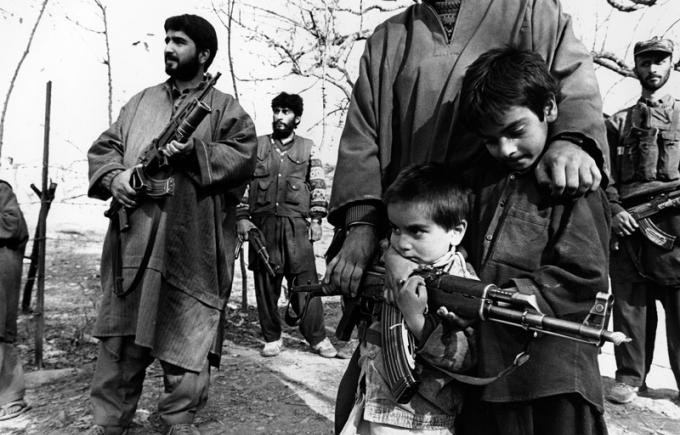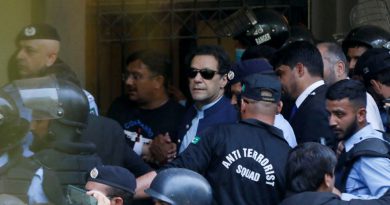From Kashmir’s Badami Bagh to Nowgam: Lessons We Cannot Forget
In Kashmir’s complex, interdependent security grid: One gap anywhere becomes a risk everywhere.
There are mornings in a soldier’s life that vanish into routine, swallowed by the rhythm of duty. And then there are mornings that stay etched forever, the kind that return decades later with the same heaviness, the same sting, the same questions.
29 March 1994 was one such morning in the Kashmir Valley.
The explosion that tore through Badami Bagh Cantonment in Srinagar was not just a blast; it was a moment of institutional reckoning. A tragedy that forced the Indian Army to confront a dangerous procedural habit and rewrite the way it handled explosive recoveries forever.
Three decades later, on 14 November 2025, when an explosion in Nowgam shook local neighbourhoods, those old memories resurfaced. The police eventually declared the incident non-terror, but the message it carried was unmistakable : Tragedies teach lessons. Institutions that survive are the ones that learn. And learning is not optional, it is life-saving.
This is the story of how one painful event transformed the Army’s explosive-handling doctrine, and why the same lesson must now guide every security agency operating in the Valley.
A Valley Under Siege: The 1990s
To understand the magnitude of the Army’s transformation post-1994, one must return to the Valley of the early and mid-1990s. It was not merely disturbed; it was bleeding. Every soldier serving then remembers the atmosphere. Encounters were daily realities. Recoveries of weapons and explosives were routine. Militants grew more sophisticated with each passing month. Infiltration from across the border came in waves. Villages oscillated between fear and silence.
In those years, explosive material surfaced in the most unexpected places, from a shepherd’s abandoned hut to the false ceiling of a kitchen, from potato sacks in village bazaars to hollowed-out tree trunks near orchards.
Recoveries included RDX, fully assembled and partially assembled IEDs, detonators and pencil timers, anti-personnel mines, grenades, commercial explosives and complete weapon caches. And at the time, procedure demanded one thing : Every explosive recovery was to be transported back to a military camp.
To officers and men fighting round-the-clock, this was simply “what we always did.” Evidence was required in court, so evidence had to be stored, catalogued, and physically produced.
But the valley is a harsh teacher, and 29 March 1994 was the day it delivered a lesson the Army would never ignore again.
Badami Bagh 1994: When Routine Turned into Tragedy
The explosion inside Badami Bagh Cantonment was devastating. For those who were there, the memories remain vivid even today. A thunderous blast that shook structures. Smoke spiralling into the sky. Soldiers rushing toward the site despite not knowing whether secondary explosions awaited. The sound of ambulances, the chaos of rescue, the fear of casualties. The sickening awareness that this wasn’t triggered by the enemy, it was triggered by an internal lapse.
It was a tragedy born not from negligence, but from routine, a routine that had gone unquestioned. And that realisation cut deeper than the physical damage.
The Army reacted not with excuses, but with introspection. Inquiries began immediately. Every detail was scrutinised. What exactly caused the explosion? What procedural flaw had allowed this? How many times had this risk been taken unknowingly before? How can such a mistake be prevented permanently?
The Army sought answers not to punish, but to transform. And transform it did.
The Army’s Doctrinal Revolution: “Destroy at Site”
The corrective action that emerged from the 1994 tragedy was nothing short of transformative.
1. The Core Reform – No More Transporting Hazardous Explosives: This was the heart of the doctrinal shift. From 1994 onward, unstable or dangerous explosive material would never again be carried into a camp or through civilian areas. It would be destroyed where it was found. This one rule removed the most dangerous link in the entire chain.
2. Replace Physical Evidence with Documentation: A major challenge was legal: courts traditionally demanded physical proof. The Army solved this with meticulous documentation. High-quality photographs, detailed inventories, measurements and markings, witness signatures, sealing protocols, location details (later GPS-based) and video evidence where necessary.
The documentation became the evidence. Safety did not weaken justice; it strengthened it.
3. Controlled Destruction Became Standard Operating Procedure: Explosive disposal became a scientific process. Engineer units or Ordnance Corps specialists were called. Civilians were moved to safe distances. Blast radii were established. Controlled detonation techniques were standardised. Post-blast checks ensured no secondary hazards remained.
4. A Stronger, Court-Proof Chain of Custody: Every document related to the destroyed explosives was treated as sacrosanct. The chain of custody was tightened, Inventories sealed, countersigned by police whenever possible, maintained in unit archives and forwarded with FIRs as primary evidence. This ensured transparency, accountability, and prosecutorial strength.
31 Years, Zero Repeat Incidents
This is the real legacy of 1994. Since the doctrinal overhaul, the Indian Army has not suffered a similar accidental blast due to explosive recoveries. Not once in more than three decades. The magnitude of this achievement is easily missed, because success, when sustained, becomes invisible.
But every soldier who has served in the Valley knows the truth: The Army saved lives because it changed. It changed because it learnt. And it learnt because it listened to the cost of its own mistake.
Nowgam 2025: A Different Blast, A Familiar Reminder
On 14 November 2025, an explosion occurred in the Nowgam area of Srinagar. The police clarified quickly that it was not a terror attack, but public anxiety spiked anyway, because in Kashmir, every blast, regardless of origin, echoes louder. For those who lived through the 1990s, the incident revived a single question: Are all security agencies learning from each other’s lessons?
The Army learnt its lesson in 1994 after paying a steep price. It ensured that never again would unstable explosives be transported casually. But do police procedures today reflect the same level of caution? Do police stations, located in dense civilian areas, follow the same destruction-at-site principles? Does their chain of custody rely enough on documentation rather than dangerous storage?
The Nowgam incident did not mirror 1994 in cause. But it mirrored it in message: In the Valley, small mistakes can have big consequences.
Army & Police in Kashmir: Shared Risks Demand Shared Learning
The Army and Police in J&K are bound by a unique partnership. Their cooperation is deeper than in any other region of the country. Together, they form the backbone of joint operations, anti-terror responses, cordon-and-search missions, bomb-disposal support, evidence recovery, SSF and CI grid stability, and counter-infiltration architecture.
But their environments are drastically different. Army camps are controlled, spacious, and fortified. Police stations are in market lanes, neighbourhoods, and crowded mohallas.
If an unstable explosive is brought into a police station, unlike in a military camp, hundreds of civilians may be within a 200-metre radius.
This geographic reality makes it even more urgent for police procedures to reflect the same caution the Army adopted after 1994.
This is not blame. It is professional truth.
Why Police SOPs Need an Immediate Upgrade
Police forces deal with a different but equally dangerous category of explosive materials, including illegal mining detonators, commercial gelatin sticks, locally made or crude IEDs, firecracker stockpiles, post-blast remnants, abandoned explosive precursors, misfired detonators, and country-made explosives.
And unlike the Army, the police often face constraints such as limited explosive-handling specialists, general-purpose vehicles used for transport, maalkhanas filled beyond capacity, no specialised explosive-storage bunkers, and inadequate explosive-safety audits.
These pressures accumulate into vulnerabilities. And vulnerabilities must never be ignored in a conflict-ridden region.
Five Lessons the Police Can Adopt – Without Waiting for a Tragedy
1. Destroy unstable or dangerous material at site. This single change has saved Army lives for 31 years. It can do the same for the police.
2. Let documentation, not storage, be the evidence. Photographs and inventories are enough for courts, there is no need to store live danger.
3. Adopt controlled destruction protocols. Police must routinely coordinate with Engineers or Ordnance specialists for safe disposal.
4. Build a comprehensive explosive-handling doctrine. A dedicated manual with Do’s & don’ts, Risk classifications, Transport limitations, Site destruction authorisation and Safe storage norms is essential.
5. Mandate SOP reviews every 3–5 years. Threats evolve. Materials evolve. Procedures cannot remain frozen in time.
The Larger Picture: Safety Is Not Just for Uniformed Forces
Every blast, whether in 1994 or 2025, carries a human cost far beyond uniforms. Safety protocols protect shopkeepers opening shutters in the morning, families living in adjacent homes, children walking to school, workers commuting through Nowgam’s lanes and elderly residents sitting outside in the winter sun.
When security institutions strengthen their SOPs, they strengthen public trust. And in a region as sensitive as Kashmir, public trust is priceless.
Conclusion: The Lesson of Badami Bagh Must Guide Us Still
The Badami Bagh blast of 29 March 1994 reshaped the Indian Army’s approach to explosive safety. The doctrinal shift that followed was not an adjustment, it was a transformation.
The Nowgam blast of 14 November 2025, though non-terror, serves as a timely reminder. Safety is not static. Procedures must evolve. Learning must be shared, not siloed.
In Kashmir’s complex, interdependent security grid: One gap anywhere becomes a risk everywhere.
The Army closed its gap three decades ago. The police, who operate in even more crowded environments, have every reason to incorporate those hard-won lessons today.
Because the Valley remembers. Because tragedies teach. And because lessons not institutionalised are tragedies repeated.



